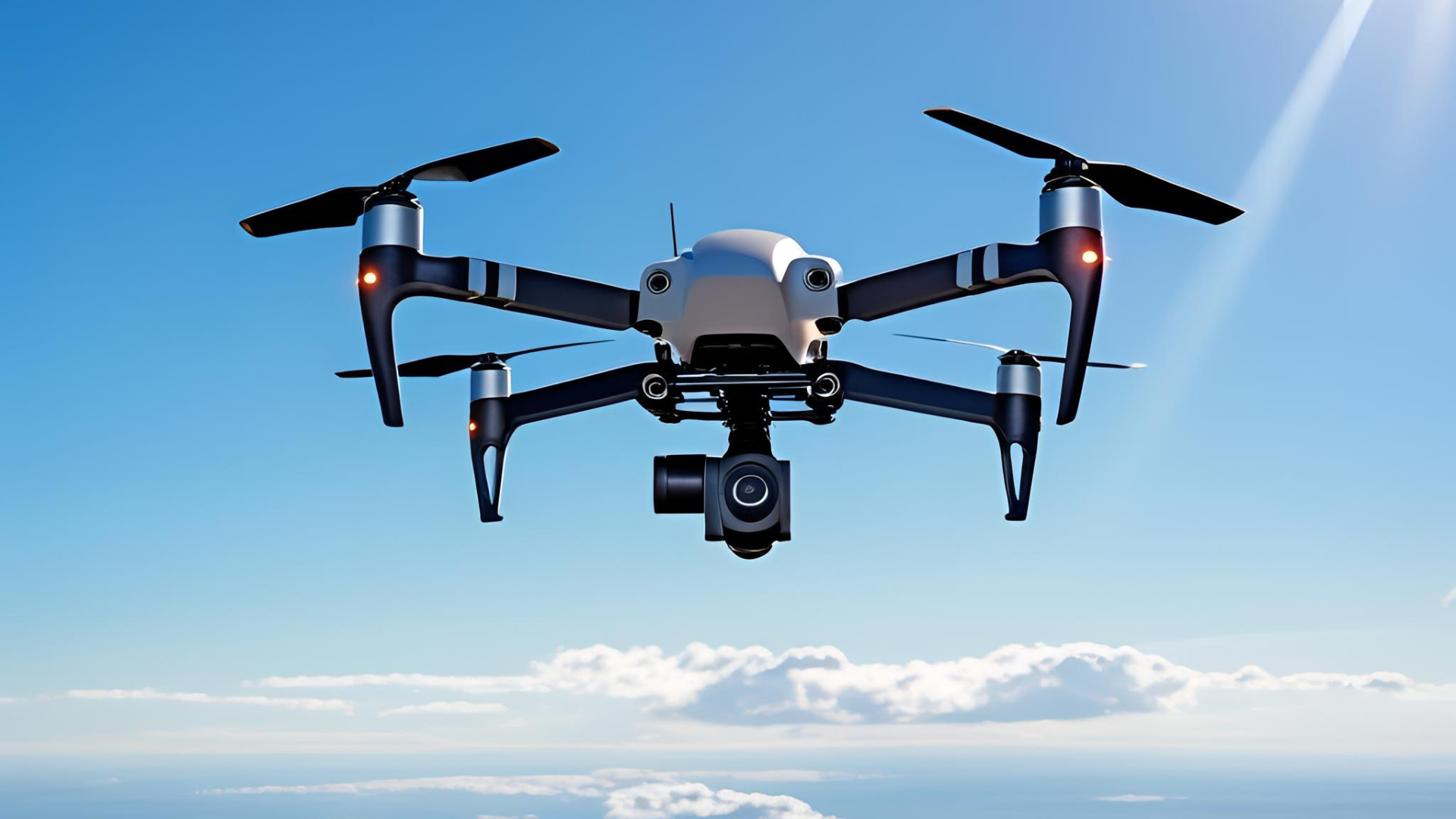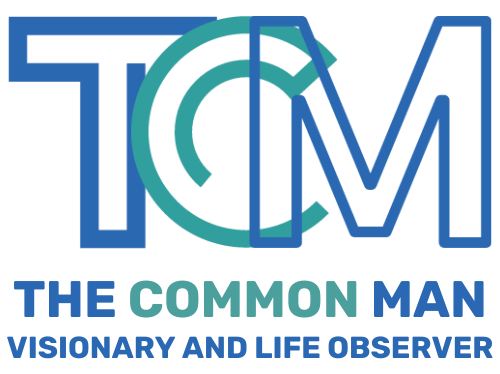
The Rise of Dictatorship in America: Trump’s Plan-2025 and the Future of Democracy In late February of this year, the Trump Administration made a historic move with the success of Plan-2025, a controversial initiative that altered the U.S. Constitution. The amendment to the Constitution eliminated the long-standing two-term limitation for U.S. presidents, granting Donald Trump the ability to serve an unlimited number of terms. This drastic shift has effectively turned Trump into the dictator he has always sought to become, with unprecedented power to reshape the country and dismiss any oversight from government bodies or officials. The implications of this plan are monumental, and the balance of power in the United States may never be the same. Trump’s Rule: Unchecked Power and Growing Dictatorship By eliminating term limits, Trump has consolidated power to such an extent that he now controls every branch of government with little to no accountability. His new status as the unlimited-term president has emboldened him to ignore rulings and demands from key institutions such as the Supreme Court, the U.S. Congress, and even federal and state Attorneys General. He now rules with a sense of invincibility, acting on whims and disregarding constitutional checks and balances. One of Trump’s most alarming actions has been his purging of hundreds of FBI and CIA agents. These agents were tasked with reporting to the Executive Branch of the government regarding complaints and maintaining the integrity of the government. The checks and balances that were meant to safeguard against the abuse of power have been stripped away, leaving Trump to run the government without oversight. Additionally, he has targeted those in intelligence agencies whom he perceives as disloyal, particularly those involved in investigating the controversial transfer of classified documents to his Mar-a-Lago estate. Threats to the Justice System: A President Above the Law Trump has also moved to defy the U.S. legal system with increasingly brazen threats and actions. He has fired top officials, such as the Chairman of the Federal Reserve, claiming that he has the legal authority to do so. He has also escalated tensions with New York City prosecutors, demanding that they rescind his conviction related to a sexual misconduct case, a direct challenge to the autonomy of the judicial system. In addition to his conflicts with the legal system, Trump has made public calls to impeach or remove judges who make rulings he disagrees with. He referred to U.S. District Judge James E. Boasberg as an "unelected troublemaker and agitator," and has openly advocated for his impeachment. Chief Justice John Roberts has rejected calls for the impeachment of federal judges, despite Trump’s demands to remove judges who ruled against his deportation plan. Trump’s disregard for the separation of powers and his desire to control all branches of government point to a dangerous erosion of democracy. The Corruption of the Office of the President Perhaps one of the most alarming aspects of Trump’s presidency is the way in which he has used the Office of the President for personal and corporate gain. He reportedly sold his presidential powers to the oil and gas industry, offering to lift regulatory restrictions in exchange for millions of dollars. This blatant corruption undermines the integrity of the presidency and the office that is meant to serve the American people, not private interests. Furthermore, Trump’s public statements on global warming—calling it “hogwash” and his withdrawal from the Kyoto Protocol—demonstrate his disregard for science, environmental protection, and global cooperation. International Relations: A Disastrous Trade War On the international front, Trump’s policies have alienated America’s trading partners worldwide. Countries such as Canada, Mexico, and those across Central America have been directly affected by his erratic trade decisions. Trump has disrupted long-standing trade agreements, hurt relationships with neighboring countries, and created unnecessary conflict in global markets. As a result, America’s tourism industry is likely to suffer for years to come, as foreign visitors are deterred by the hostile and unpredictable political climate Trump has fostered. A Civil War in the Making? The dangers posed by Trump’s unchecked power are dire. If he is not impeached before the midterm elections, the United States could be headed toward a second Civil War—this time not over slavery, but over the very fabric of American democracy. Trump’s reign has already seen significant erosion of democratic institutions, and without swift action to hold him accountable, the country could be irrevocably divided. Impeachable Offenses: The Case for Accountability There are several impeachable acts that Trump should be held accountable for: Corruption: Using the presidency to further personal and corporate interests, such as offering to eliminate oil and gas restrictions for financial gain. Abuse of Power: Firing government officials, including FBI and CIA agents, to prevent oversight of his actions and maintain control. Disregard for the Rule of Law: Ignoring Supreme Court rulings, threatening to impeach judges, and attempting to undo legal proceedings against him. Undermining Democracy: Elimination of presidential term limits and consolidating absolute power, essentially dismantling checks and balances. Trump’s actions over the past few years, and especially his success with Plan-2025, have made clear that he intends to rule without the constraints of the Constitution, legal precedent, or the will of the people. His rise to power and the consequences of his unchecked behavior present a threat to the very foundations of American democracy. The Need for Immediate Action The time to act is now. If America hopes to preserve its democratic ideals, Trump must be impeached before he can do more irreparable damage to the country. If the Supreme Court, Congress, and other governmental bodies fail to act, the United States will be forced to confront the reality of a dictatorial regime—one that may not be easily undone.

Why You Should Consider Investing in Lyten: A Game-Changing Technology If you haven’t decided yet to invest in Lyten, this blog may just change your mind. The company is making waves in the tech and manufacturing sectors, and the opportunities for growth are monumental. But don’t just take my word for it—Lyten is supported by some of the biggest names in industry and government, and their groundbreaking technology is poised to redefine the future of energy storage, space exploration, and manufacturing. Major Industry Players Backing Lyten First, let’s talk about Stellantis, the parent company of Chrysler, which is a major investor and licensee of Lyten’s technologies. That’s right—one of the largest automotive giants is placing its trust in Lyten’s innovations. But the story doesn’t end there. The U.S. Space Force’s Endorsement Major General Steven “Bucky” Butow, the head of the United States Space Force, has called Lyten’s 3D-Graphene technology revolutionary. According to Butow and the director of Space Portfolio of the Defense Innovation Unit Technology, this technology will give the U.S. Space Force a critical edge in future operations. The endorsement from such a high-ranking official in a crucial U.S. military branch speaks volumes about Lyten's potential. Mercedes Benz’s Commitment to Lyten’s Technology Not only is Lyten attracting attention from U.S. military leaders, but Mercedes Benz, a world leader in luxury automobiles, has turned over eight of its Ni-Con battery factories in Europe to be retrofitted to produce Lyten’s Lithium-Sulfur batteries. This major move signals a significant step toward the widespread adoption of Lyten’s innovative energy solutions. FedEx’s Investment and Future Plans Lyten also has FedEx and its founder, Fred Smith, as major investors and licensees. FedEx plans to convert its entire fleet of trucks to be built from 3D-Graphene and powered by Lyten’s advanced Lithium-Sulfur batteries. This is not just a significant investment in the future of transportation but a testament to the incredible potential of Lyten’s technology to revolutionize industries. The U.S. Military's Future Commitment The U.S. Military has already made significant strides with Lyten’s technology. As of 2027, the U.S. will no longer allow any batteries made in China to be used within its borders. This is especially pertinent given that 100% of Ni-Con batteries are produced in China. In contrast, Lyten’s batteries are made using materials available in the U.S., providing a critical strategic advantage. With the U.S. Military already owing Lyten over $10 billion, that figure is only expected to rise by the end of 2025. Lyten’s Financial and Technological Growth Did you know that Lyten has raised over $410 million and holds over 200 issued patents? The company files an impressive 30 new patents per year, solidifying its place at the forefront of innovation. Furthermore, Goldman Sachs raised over $250 million through a private equity deal and plans to take Lyten public by early 2026. The Magic of 3D-Graphene The core of Lyten’s success is its revolutionary 3D-Graphene technology. While 2D-Graphene was patented and won the Nobel Prize for Physics in 2010, it never lived up to expectations. Lyten, however, discovered what’s being called the “magic sauce” that makes 3D-Graphene a game-changer. Unlike its 2D counterpart, 3D-Graphene has properties that make it ideal for real-world applications: It looks and feels like plastic but can conduct electricity better than copper. It is half the weight of steel and twice as strong. It’s malleable like plastic and can be tuned and programmed like a semiconductor. These remarkable properties allow 3D-Graphene to be used in a variety of industries, including aerospace, automotive, and defense. For instance, the U.S. Military is already using Lyten’s batteries to power drones, and the hulls of these drones are made from 3D-Graphene. Lyten’s Future Potential Given the tremendous technological advancements and strategic investments, Lyten is poised to become the fastest-growing company in the history of NASDAQ. The potential for significant returns is immense, and while the opportunity to buy Lyten stock may not be available just yet, you can bet that it won’t be long before the company goes public. Why Invest in Lyten? Lyten’s groundbreaking technology has already caught the attention of major investors, military officials, and industry leaders. With over $410 million raised, 200+ patents, and strategic licensing deals in place, Lyten is on track for an exciting future. As the company prepares to go public by early 2026, now is the time to learn more about this extraordinary opportunity. The world is changing, and Lyten is leading the way with 3D-Graphene technology that could revolutionize energy storage, defense, and manufacturing. Whether you’re an investor looking for the next big opportunity or someone curious about the future of technology, Lyten is a company to watch.

The Common Man’s Vision: A New Political Party for America’s Future In a bold new initiative, Paul Crawford, also known as The Common Man, has announced plans to launch a new U.S. political party with the goal of addressing America's most pressing challenges and refocusing national efforts. The vision of this party is simple yet transformative—concentrating America’s energy and resources on the continent, rather than spreading them thin across the globe. This approach will also tackle the looming crisis of unfunded liabilities and declining birthrates, which, if not addressed now, could send the country into an irreversible spiral of financial instability. A Vision for the Future: Prioritizing the Americas America stands at a critical juncture. For decades, the U.S. has played an outsized role on the world stage, taking on global responsibilities that have increasingly burdened its economy. But as The Common Man argues, it’s time for a pivot. This new political party aims to shift America’s focus inward—to prioritize the entire Americas continent, from Canada to the tip of South America. By strengthening relations within the region, America can better address its economic challenges while also securing its future through partnerships and regional stability. America’s Growing Unfunded Liabilities: A Ticking Time Bomb One of the party’s key platforms is to highlight and tackle America’s multitrillion-dollar unfunded liabilities, particularly in the Social Security system, which is projected to reach an unfunded liability of $7 trillion over the next 75 years. As it stands, the Social Security system is on an unsustainable path—one that threatens to bankrupt the nation by mid-century. The government has failed to secure the necessary funds to meet these obligations, borrowing instead from the funds meant for future retirees. This reckless borrowing must stop now, and the new political party has a plan to address this pressing issue. The numbers speak for themselves. As of May 2024, the U.S. national debt stands at a staggering $34.63 trillion. This figure alone is enough to send shockwaves through the economy, especially when considering that $628 billion is spent just to service this debt—16% of the total federal spending in fiscal 2024. If this trajectory continues, the nation faces a grim future. The Birthrate Crisis: A Declining Workforce But the financial crisis is not the only problem America faces. The country is also dealing with a rapidly declining birthrate. With just 1.6 children born per woman, America is now facing a demographic shift that will drastically reduce the workforce. This issue is not unique to the U.S.—countries like China, Japan, and South Korea are grappling with similar problems, and all have implemented policies to encourage higher birth rates. In Japan, for example, the government has been offering financial incentives for families to have more children. But for America, the solution is more complicated and requires a long-term strategic approach. Immigration: A Vital Resource As the Common Man’s platform highlights, one crucial factor in reversing this demographic decline is immigration. America has always been a country of immigrants, and it will need to continue welcoming individuals who can contribute to the economy. The party advocates for a more open immigration policy—one that focuses on attracting talented, trainable workers who can help fill the millions of open jobs across the nation. The current trend of trying to shut down the southern border only exacerbates the problem. Consider Minnesota’s labor shortage, where there are 200,000 unfilled jobs. The state’s healthcare sector alone needs 10,000 workers, and the senior care sector is short 17,000. Across the U.S., the problem is similar, and without a strategy to address it, America’s economic future will be in jeopardy. Strengthening Regional Ties: America’s Role in the Americas In addition to addressing the birthrate and immigration, the new political party advocates for strengthening ties with neighboring nations. Mexico, for example, is thriving economically and is one of America’s largest trading partners. The U.S. should not only continue its economic collaboration with Mexico but also take action to help countries like Cuba, Chile, Panama, and others in the Americas that face significant challenges. For instance, America could help Cuba stabilize its economy, assist Panama in repairing the Panama Canal, and support efforts to eliminate drug cartels in Colombia and Ecuador. China’s growing influence in the Western Hemisphere, particularly in Cuba and Venezuela, is a significant concern. America must act quickly to secure its position in the region and prevent China and Russia from gaining a foothold. A New Political Party: Addressing Debt and Overspending The central mission of the new political party is to address America’s growing national debt, unfunded liabilities, and reckless government spending. For too long, both Democrats and Republicans have failed to act responsibly, leading to the financial mess the country finds itself in today. By listing assets and liabilities, the U.S. government can finally get a handle on its finances, creating a transparent and sustainable path forward. The new party’s platform calls for a balanced approach to budgeting—limiting government expenditure to a maximum of 20% of the previous year’s GNP. This will put an end to the debt ceiling crisis and ensure that America’s finances are managed responsibly. Taking Action: Join the Movement The Common Man’s movement is not just about ideas—it’s about action. With a clear vision for America’s future, this new political party is ready to take on the challenges of unfunded liabilities, immigration, economic stability, and regional partnerships. The movement is gaining traction, and by May 2025, it will officially go live. The Common Man encourages all Americans to get involved, spread the word, and join the cause. Through social media and public outreach, the movement seeks financial support and new members who are ready to take action and bring change to America and the Americas. As we move forward into a new era of political leadership, it’s time to shift focus and address the pressing issues that have been ignored for far too long. America’s future depends on bold leadership, a strategic approach to immigration, and a realistic plan to address the nation’s financial crisis. The Common Man’s vision is a call to action for anyone who believes that the time for change is now.
